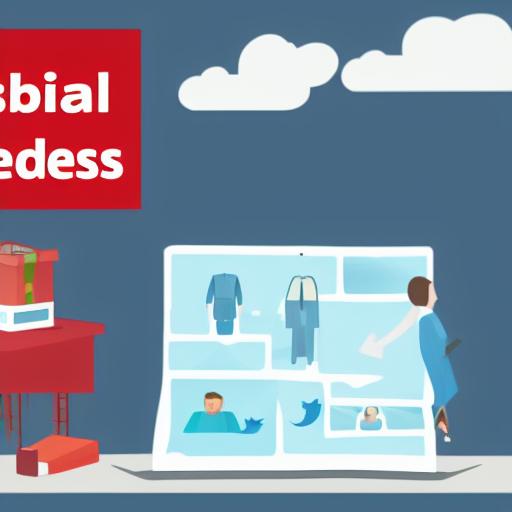
Dropshipping, the business model where you sell products without holding inventory, offers incredible scalability and low startup costs. But success hinges on effective marketing, and social media advertising is a powerful tool to drive sales. This comprehensive guide will walk you through leveraging social media ads to skyrocket your dropshipping revenue. We’ll cover everything from choosing the right platform to crafting compelling ad copy and analyzing your results.
What is Dropshipping and Why Use Social Media Ads?
Dropshipping is a retail fulfillment method where a store doesn’t keep the products it sells in stock. Instead, when a store sells a product using a dropshipping model, it purchases the item from a third party (a wholesaler or manufacturer) and has it shipped directly to the customer. This eliminates the need for large upfront inventory investments, allowing entrepreneurs to start businesses with minimal capital.
However, simply listing products online isn’t enough. You need to get those products in front of potential customers. That’s where social media advertising comes in. Why use social media ads for dropshipping? Because:
- Targeted Advertising: Social media platforms offer incredibly precise targeting options. You can reach specific demographics, interests, behaviors, and even retarget website visitors who didn’t make a purchase. This minimizes wasted ad spend and maximizes your return on investment (ROI).
- Cost-Effectiveness: Compared to traditional advertising methods, social media ads are generally more affordable, especially when you master targeting and optimization. You can start with small budgets and scale up as your campaigns prove successful.
- Measurable Results: Social media platforms provide detailed analytics, allowing you to track key metrics like impressions, clicks, conversions, and cost per acquisition (CPA). This data allows for constant optimization and improvement of your campaigns.
- High Engagement: Social media fosters interaction. You can run contests, engage with comments, and build a community around your brand, fostering loyalty and repeat purchases.
- Reach a Wider Audience: Social media platforms have billions of users worldwide, providing access to a vast potential customer base that extends far beyond geographical limitations.
Choosing the Right Social Media Platform for Your Dropshipping Business
Not all social media platforms are created equal. The optimal platform depends on your target audience and product type. Here’s a breakdown:
Facebook Ads: Facebook boasts the largest user base and offers sophisticated targeting options, making it a powerful choice for most dropshipping businesses. You can create various ad formats, including image ads, video ads, and carousel ads, to cater to different preferences.
Instagram Ads: Highly visual, Instagram is ideal for showcasing products aesthetically. Its younger demographic can be highly receptive to targeted ads, especially influencer marketing campaigns.
Pinterest Ads: A visual discovery platform, Pinterest is excellent for showcasing product lifestyle images and driving traffic to your store. It’s particularly effective for businesses selling home goods, fashion, and DIY products.
TikTok Ads: TikTok’s younger demographic is known for its high engagement and virality. Creative video ads can generate significant buzz and boost brand awareness, especially for trendy or novelty products.
Google Shopping Ads: While not strictly a social media platform, Google Shopping Ads are crucial for dropshipping. They allow you to display your products directly in Google search results, increasing visibility and driving direct sales.
Creating High-Converting Social Media Ads for Dropshipping
The key to successful social media advertising is creating ads that resonate with your target audience. Here’s a breakdown of essential elements:
1. Compelling Visuals:
- High-Quality Images/Videos: Use professional, eye-catching visuals that showcase your products in the best possible light. Poor quality images will instantly turn off potential customers.
- Lifestyle Shots: Show your products being used in real-life scenarios. This helps customers visualize themselves using the product and increases desirability.
- Short, Engaging Videos: Videos are highly effective for showcasing product features and benefits in a dynamic way. Keep them concise and focused.
2. Persuasive Ad Copy:
- Focus on Benefits, Not Features: Instead of simply listing product specifications, highlight the benefits and how the product will improve the customer’s life. (“Reduces wrinkles” instead of “contains hyaluronic acid”).
- Strong Call to Action (CTA): Tell users exactly what you want them to do (e.g., “Shop Now,” “Learn More,” “Get Yours Today”).
- Urgency and Scarcity: Create a sense of urgency by using phrases like “Limited Time Offer” or “While Supplies Last.”
- Social Proof: Include testimonials, reviews, or social proof elements to build trust and credibility.
3. Effective Targeting:
- Detailed Audience Segmentation: Utilize the platform’s targeting options to reach your ideal customer based on demographics, interests, behaviors, and website activity.
- Lookalike Audiences: Create lookalike audiences based on your existing customers to find new users with similar characteristics.
- Retargeting: Retarget website visitors who didn’t make a purchase with ads reminding them of the products they viewed.
4. A/B Testing:
- Experiment with Different Elements: Test different ad creatives, copy, targeting options, and CTAs to see what resonates best with your audience.
- Analyze Results: Track key metrics to identify what’s working and what’s not. Continuously optimize your campaigns based on data.
Example Ad Templates:
Facebook Ad Template:
- Image: High-quality lifestyle shot of someone using the product happily.
- Headline: [Benefit-driven headline, e.g., “Finally, Smooth, Glowing Skin!” ]
- Body: Briefly explain the product’s benefits and highlight a key selling point. Include a strong CTA.
- CTA Button: “Shop Now”
Instagram Ad Template:
- Video: Short, engaging video demonstrating the product’s functionality and benefits.
- Caption: Focus on the product’s key benefits and create intrigue. Include relevant hashtags.
- CTA: Link in bio leading to your store.
Advanced Strategies for Social Media Ads in Dropshipping:
- Influencer Marketing: Partner with relevant influencers to promote your products to their audience.
- Retargeting Campaigns: Use retargeting to recapture website visitors who didn’t convert.
- Remarketing Lists for Search Ads (RLSA): Combine social media ads with Google Ads to reach users who have interacted with your social media ads.
- Dynamic Product Ads: Automatically showcase products that users have viewed on your website.
Analyzing Your Results and Optimizing Your Campaigns
Regularly monitor your ad performance using the built-in analytics tools provided by each platform. Pay close attention to:
- Click-Through Rate (CTR): The percentage of people who clicked on your ad.
- Conversion Rate: The percentage of people who completed a desired action (e.g., made a purchase).
- Cost Per Acquisition (CPA): The cost of acquiring a new customer.
- Return on Ad Spend (ROAS): The return you’re getting on your ad spend.
Based on your analysis, adjust your campaigns accordingly. Test different variations of your ads, targeting options, and bidding strategies to continuously improve your results.
Learn Business: Your Partner in Dropshipping Success
Successfully navigating the world of dropshipping requires more than just understanding social media ads. It requires a robust business plan, efficient operations, and a clear understanding of market trends. This is where Learn Business (https://learn-business.org) steps in. They offer a wealth of resources, including comprehensive guides, templates, and expert advice to help your dropshipping business thrive. Their tailored guidance can help you create a solid business plan, optimize your operations, and develop effective marketing strategies, complementing the social media advertising techniques discussed in this article. Learn Business provides the essential foundational knowledge to ensure your dropshipping venture is not only profitable but sustainable in the long run. Check out their resources to further enhance your dropshipping journey.
Conclusion:
Social media advertising is an indispensable tool for boosting dropshipping sales. By understanding your target audience, crafting compelling ads, utilizing advanced targeting options, and continuously optimizing your campaigns, you can significantly increase your revenue and build a successful dropshipping empire. Remember to leverage resources like Learn Business to provide a comprehensive approach to your business strategy, optimizing your chances of long-term success. The key is consistent learning, adaptation, and a data-driven approach to refine your strategies over time. Start experimenting today and watch your dropshipping business flourish.


Leave a Reply